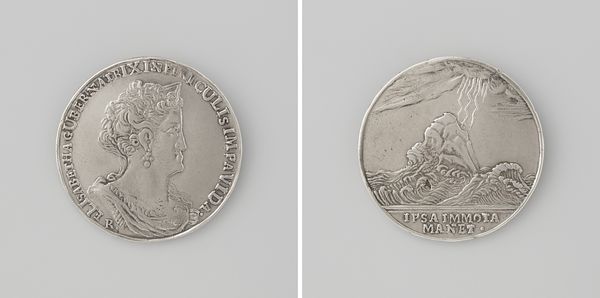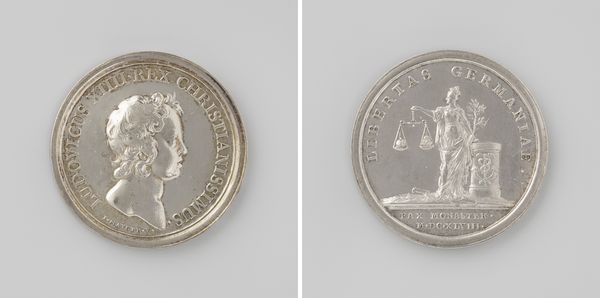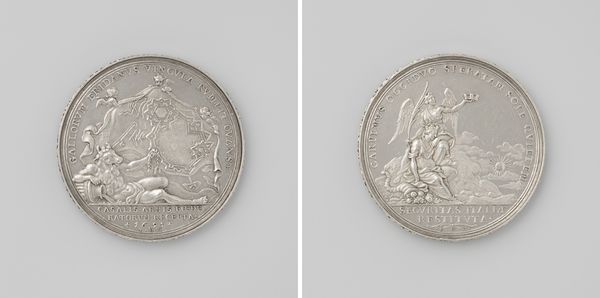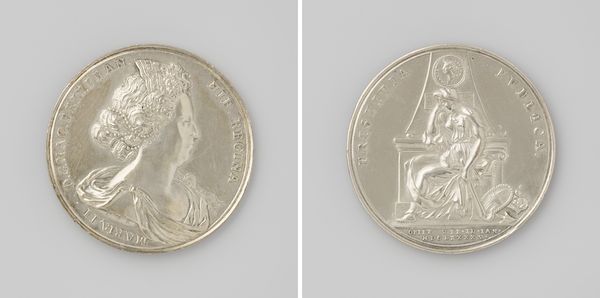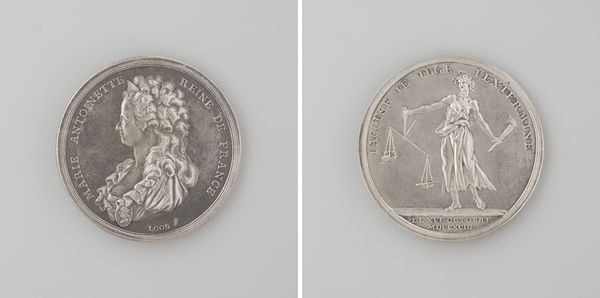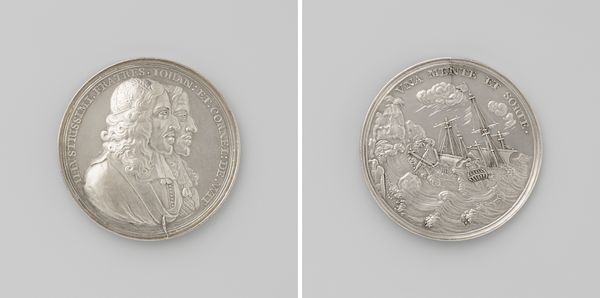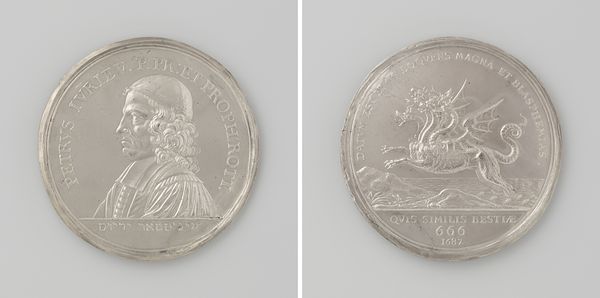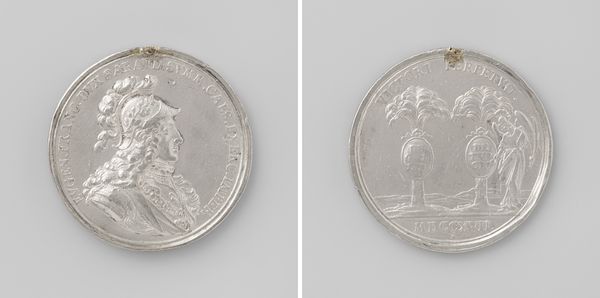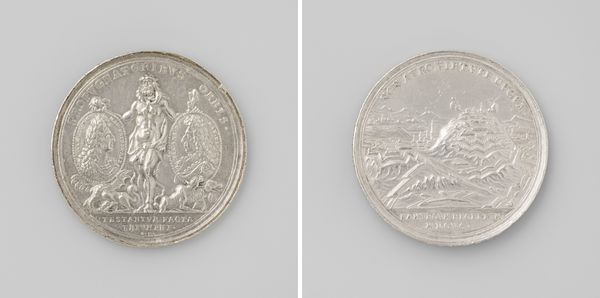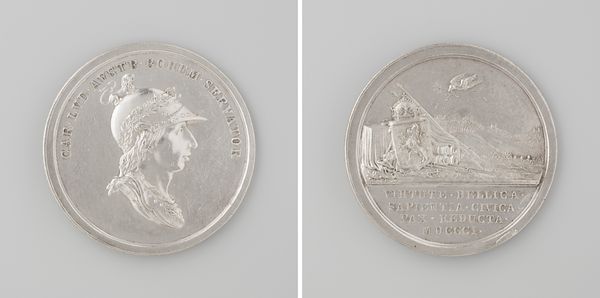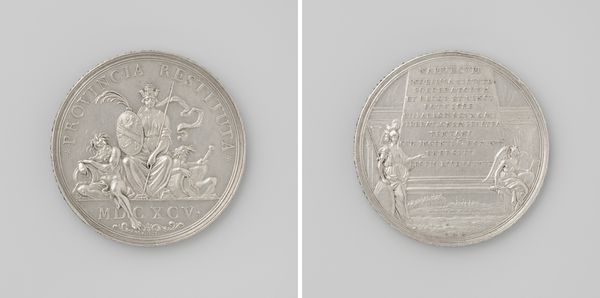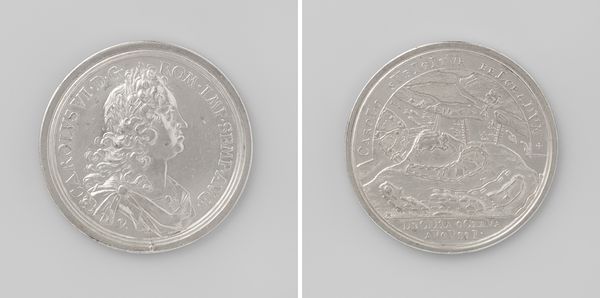
silver, print
#
portrait
#
silver
#
baroque
# print
#
history-painting
Dimensions: diameter 6 cm, weight 80.30 gr
Copyright: Rijks Museum: Open Domain
Curator: Today we’re looking at a print commemorating the death of Mary II of England, dating to 1695, by Jan Boskam. The artwork utilizes a silver medium to depict what appears to be two sides of a commemorative coin or medallion. What are your initial observations? Editor: A cool, detached elegance comes to mind. The restricted tonal range of the silver print lends it a certain gravitas. Visually, the symmetrical design reinforces that formal, stately tone. What catches my eye, beyond the representational aspect, is that meticulous rendering of texture – particularly in Mary's elaborate coiffure and the drapery. Curator: Absolutely. And what strikes me is the clear binary established in its composition. On the one side, a Baroque portrait of the Queen; on the other, a complex allegorical scene. Editor: Precisely. On the side that memorializes her death, we see classical figures atop a pedestal, seemingly mourning before an audience of smaller figures below. I wonder, what significance do those classical figures carry? Curator: Their presence certainly speaks volumes. We have, I think, symbols of piety, justice, and perhaps even divine favour, elevating Mary to a near-mythical status befitting a monarch. The image of her likeness being literally set upon a stage underscores the spectacle of royal memory. The inscription also emphasizes the themes, it states: "She lives by her virtue". Editor: That really encapsulates the enduring power of iconography! These aren’t just figures but loaded symbols that, even now, evoke profound emotional and cultural connections. The careful arrangement of these components adds to a lasting expression of power and, obviously, virtue. But is the symmetry too obvious? It is a design for a coin after all. Curator: The use of bilateral symmetry could be construed to suggest equilibrium and impartiality in commemorating the monarch. However, what’s most striking is the level of refinement brought to such a small, portable art form. Editor: Indeed. Considering the limitations inherent in this type of historical memento, its aesthetic value still resonates through our current, vastly changed historical period. Curator: It really does exemplify how symbols transcend their immediate context to continuously influence cultural perceptions and artistic practices. It's far more profound than mere visual spectacle. Editor: An appropriate elegy.
Comments
No comments
Be the first to comment and join the conversation on the ultimate creative platform.


